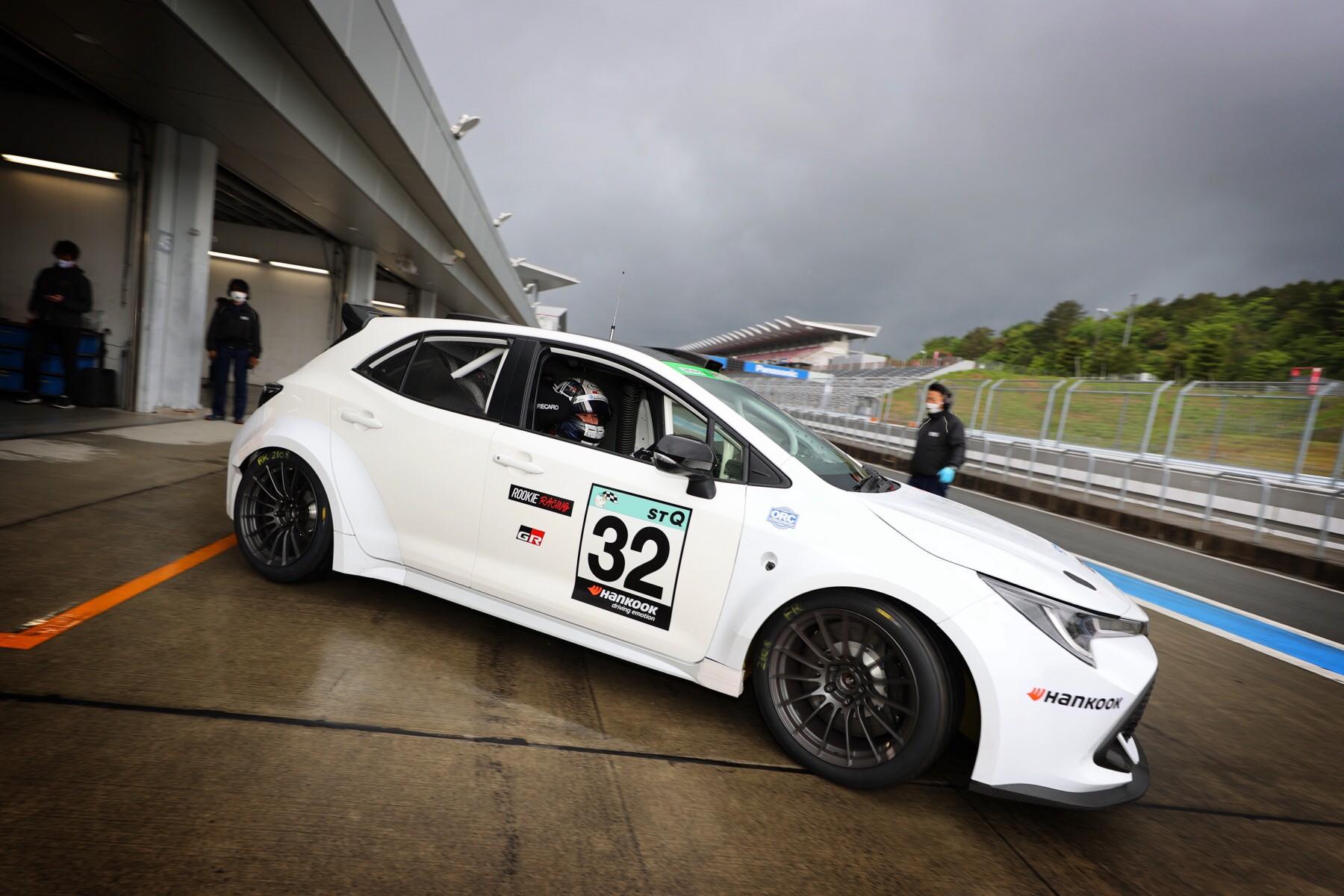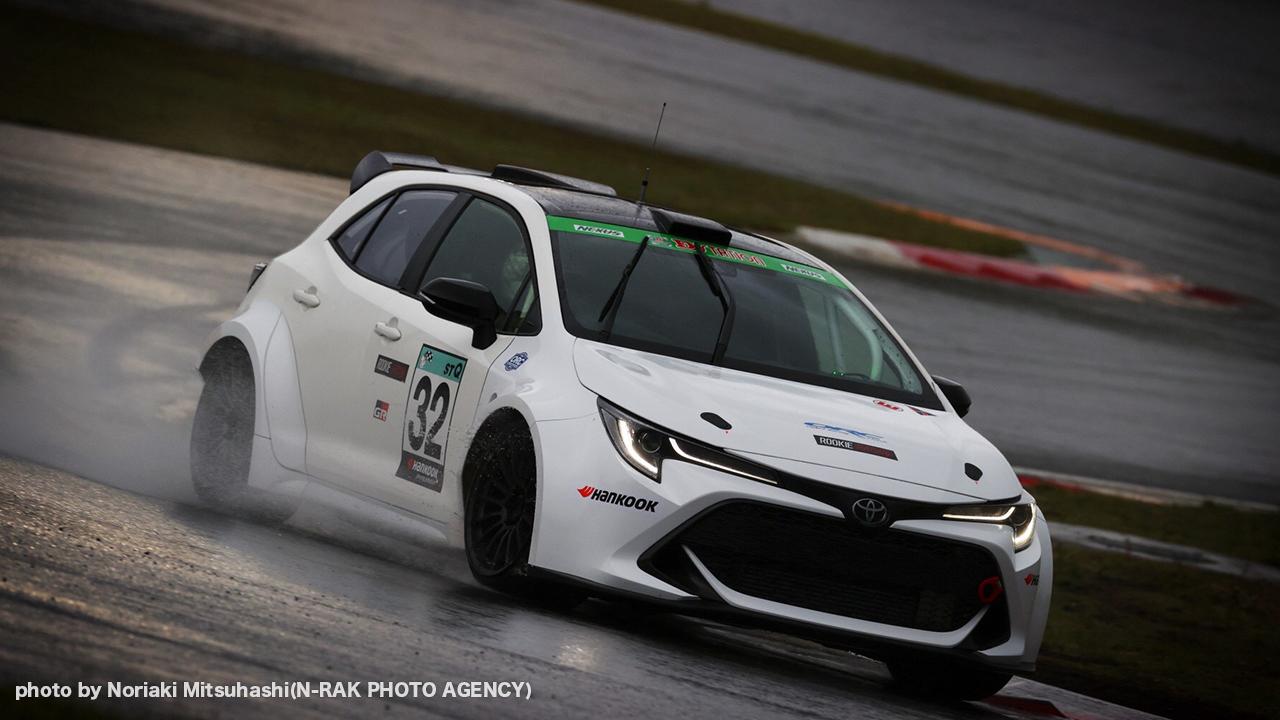
This series focuses on Toyota's first 24-hour endurance race using a hydrogen-powered engine. This fourth part shares Akio's message to all members involved in the 24-hour challenge, who share the determination to help achieve carbon neutrality.

This series brings together everything you need to know ahead of the hydrogen-powered engine’s 24-hour race appearance. The fourth part takes another look at the significance of this endeavor.
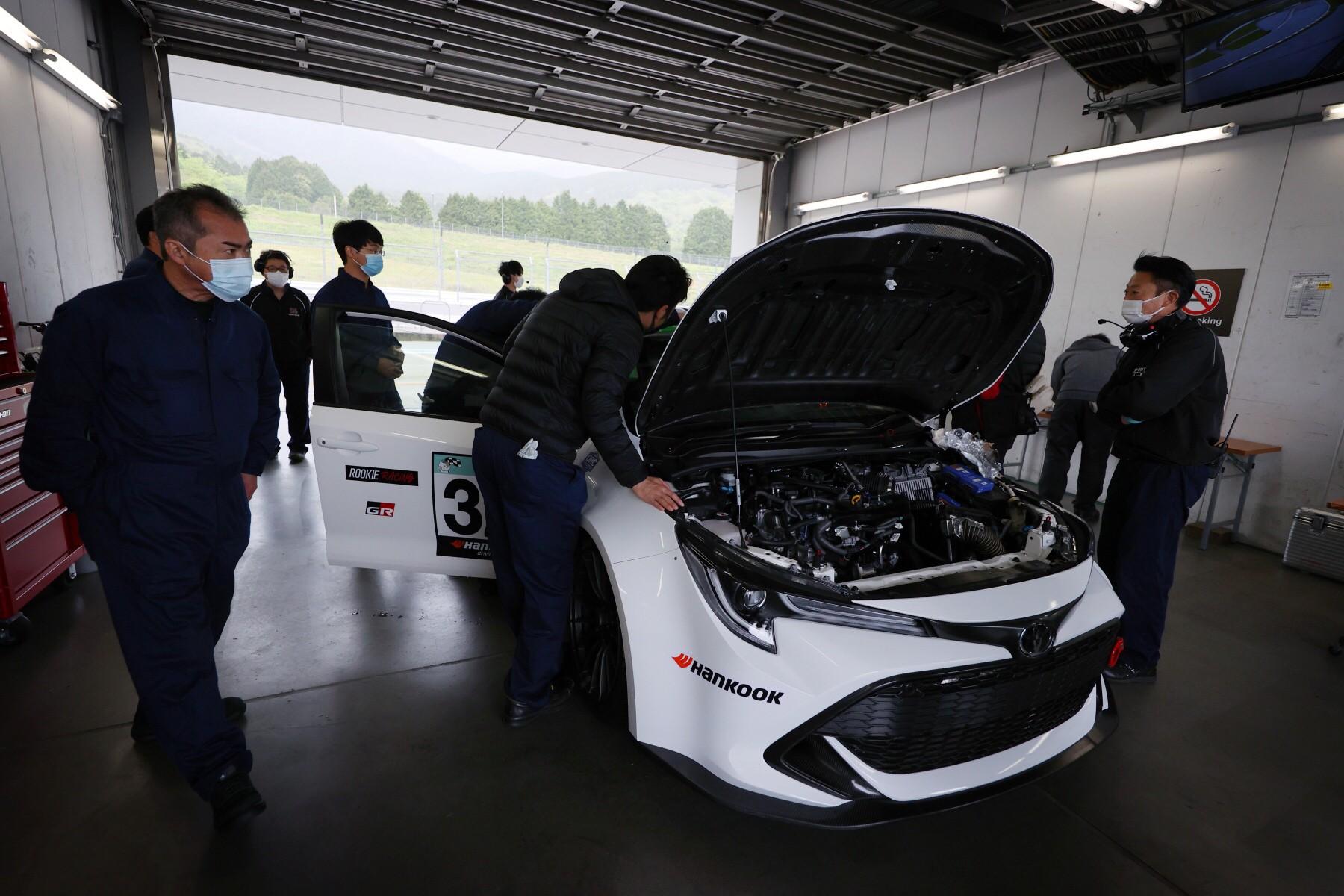
In early May, the team that included drivers, engineers, mechanics, and hydrogen refueling staffs, gathered for testing at Fuji Speedway in Shizuoka Prefecture.
They belonged to the vast array of organizations that had come together to make the car run. Besides the companies that built the vehicle, such as Toyota and Denso, there were members from ROOKIE Racing, Tom’s Spirit, and Toyota Customizing & Development (TCD), as well as Iwatani Corporation, Taiyo Nippon Sanso Corporation, and Suzuki Shokan Corporation, involved in the hydrogen refueling.
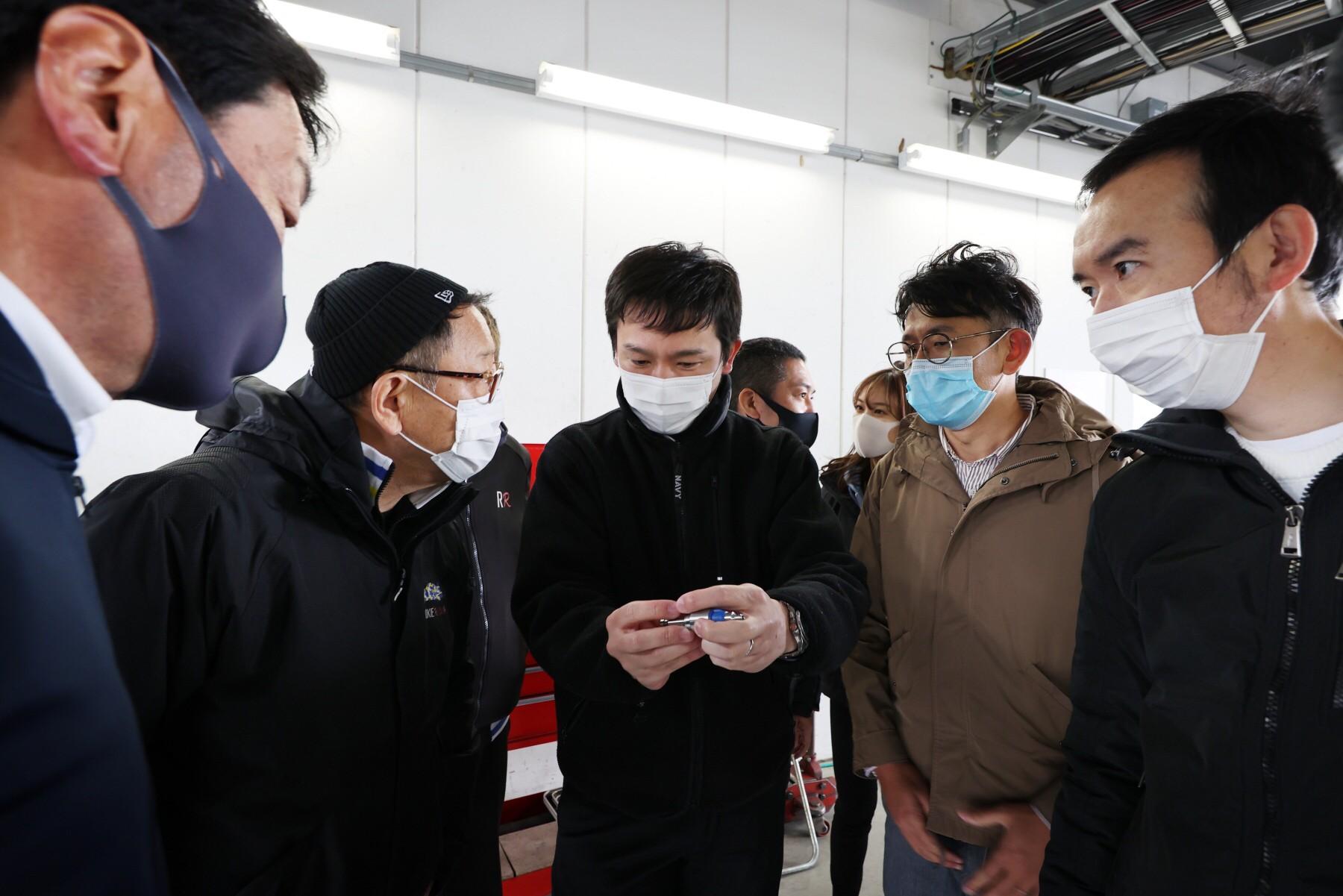
Racing is a team sport. These test runs serve as something like the practice and training camps before a big game. In this case, the match or contest is the race itself.
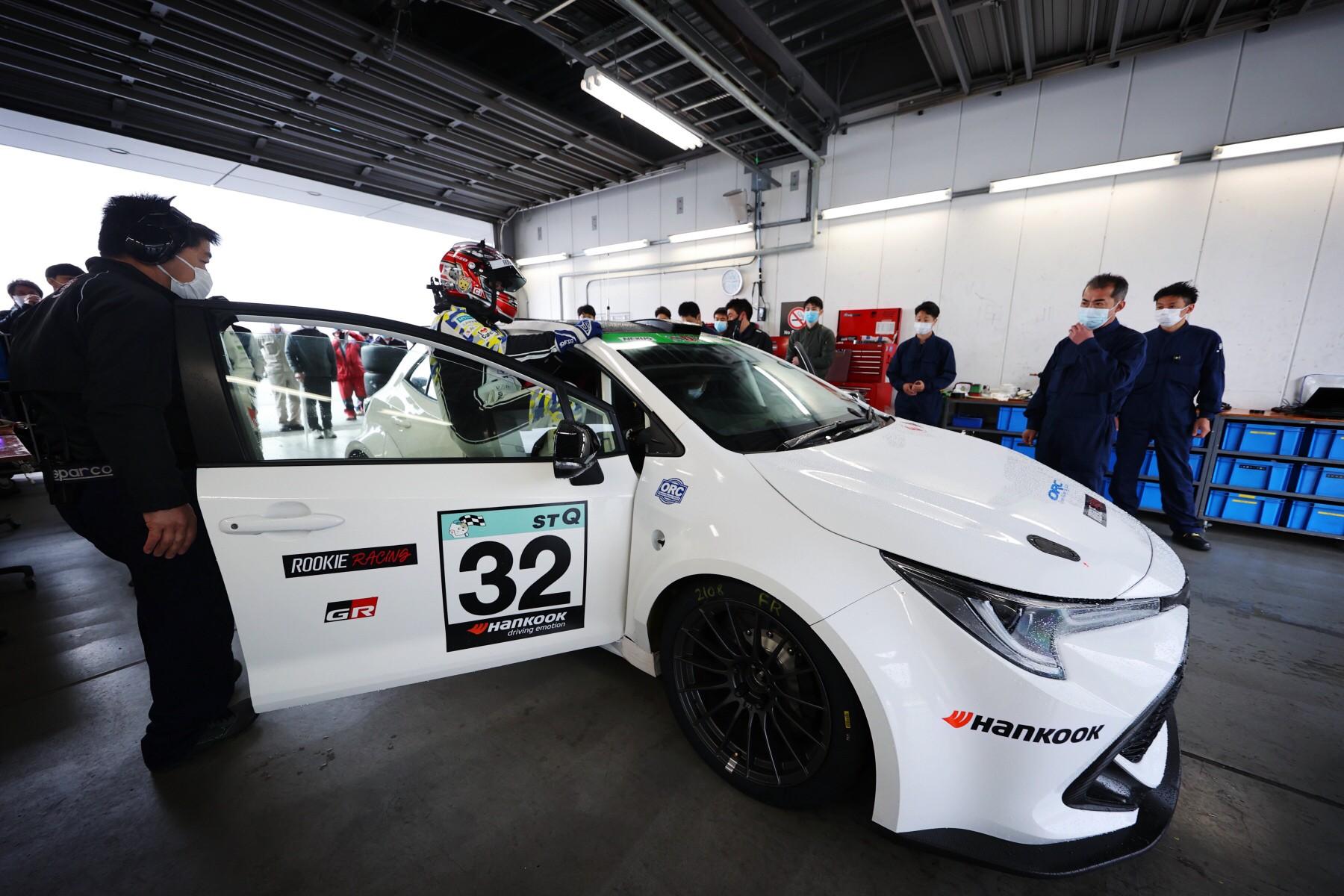
Just like at school club activities, all team members assemble for a morning meeting to start the day, and again at the end of testing.
President Akio Toyoda also took part in the day’s testing, mainly in his role as ‘Morizo’, one of the team’s drivers. At the morning and end-of-day meetings, however, it was as Toyota President and JAMA Chairman that he shared his passionate thoughts with the other team members.
‘Front line’ of the 5.5 million people in Japan’s automotive industry
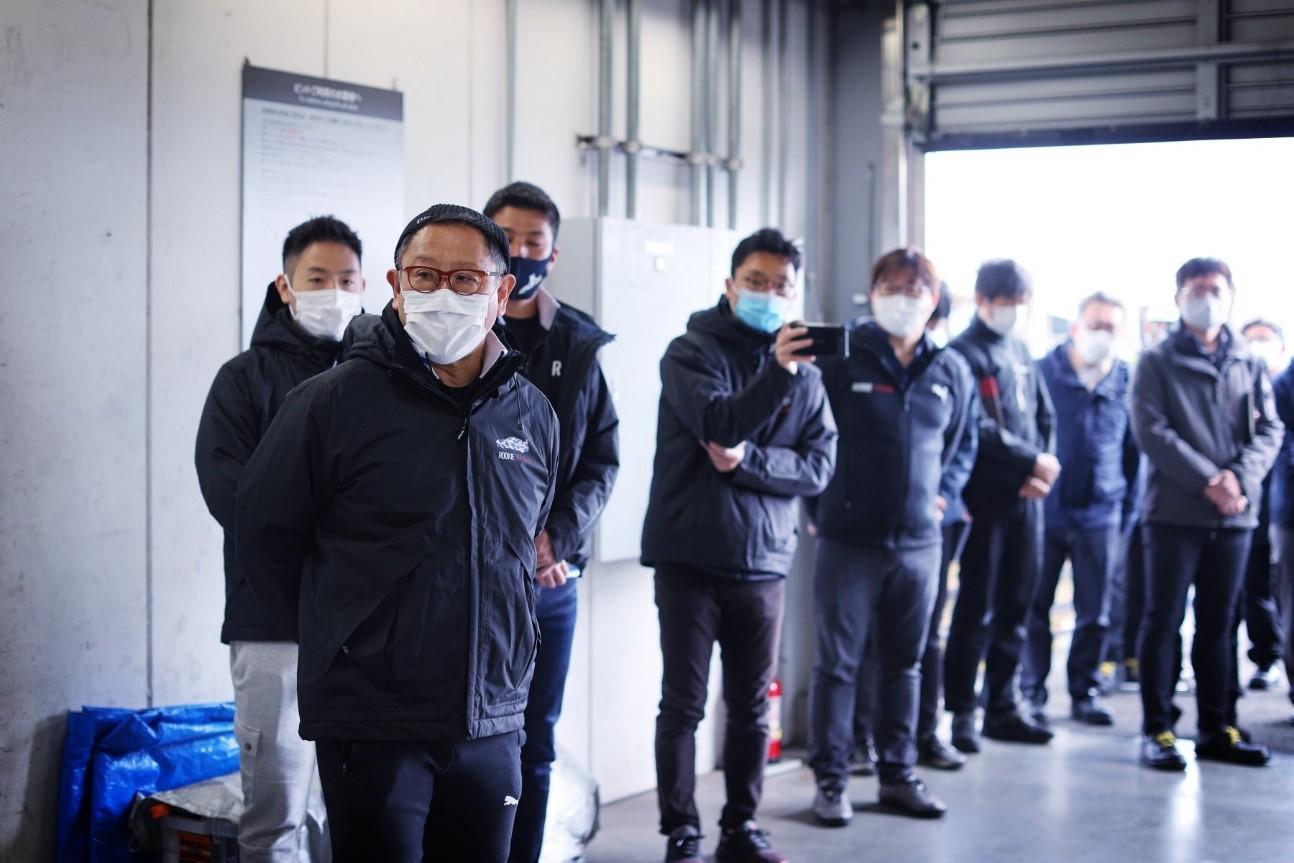
Akio’s message at the morning meeting
Carbon neutrality is the challenge of our time…
People around the world talk of BEVs as the only solution to the challenge.
In response to global warming, the automotive industry has declared that it will work as one, towards carbon neutrality.
What I want to make clear, however, is that we need to get the order right.
I believe that the goal is carbon neutrality, not ‘selling BEVs’, ‘selling FCEVs’, or ‘banning gasoline-powered cars’.
While adopting the European approach is one potential option for Japan, given our unique energy circumstances, we should also think of the choice to do things our own way.
We “still” have three decades between now and the year 2050. Thirty years ago, we didn’t have hybrids and FCEVs. But we did have engineers who continued to improve our technology.
We have the technology that created more rigid car bodies for the WRC…
We have the technology of hydrogen tanks through the experience in our FCEV Mirai…
Denso has continued to work hard on injectors…
And at Toyota, we’ve worked hard on the hydrogen-powered engine for the past four years…
ROOKIE Racing was also launched…
As the timing of all these elements came together, we found ourselves in the position to propose a new alternative.
Of the 5.5 million people in Japan’s automotive industry, the people gathered here are the ‘front line’, as it were, working towards carbon neutrality.
I believe we have a shared mindset in wanting to demonstrate another option in the quest for carbon neutrality.
Some people may say we are reckless to enter the Super Taikyu at this stage of development…
Last year, I had a chance to take part in the Super Taikyu as part of our efforts to improve the GR Yaris.
It made me realize that the cycle of breaking and fixing, breaking and fixing, is an excellent way to develop a car. I want to try the same approach with the hydrogen-powered engine.
For the hydrogen-powered engine, I would like all of the professionals gathered here to draw on their individual strengths, as we work towards our shared goal of creating a new alternative in the pursuit of carbon neutrality.
Motorsports is something to be experienced with all your senses.
You need the sounds, and the smells as well… one year on, I see it as our mission to also create the tone of the hydrogen-powered engine. I hope you will lend your abilities and efforts towards that end.
Above all, I believe the best way to demonstrate the safety of hydrogen is to drive the car myself.
I realize that I may be slowing down the professional drivers, but I believe the safety message is also important. I hope you will have me on the team!
A collaborative step toward a hydrogen-based society
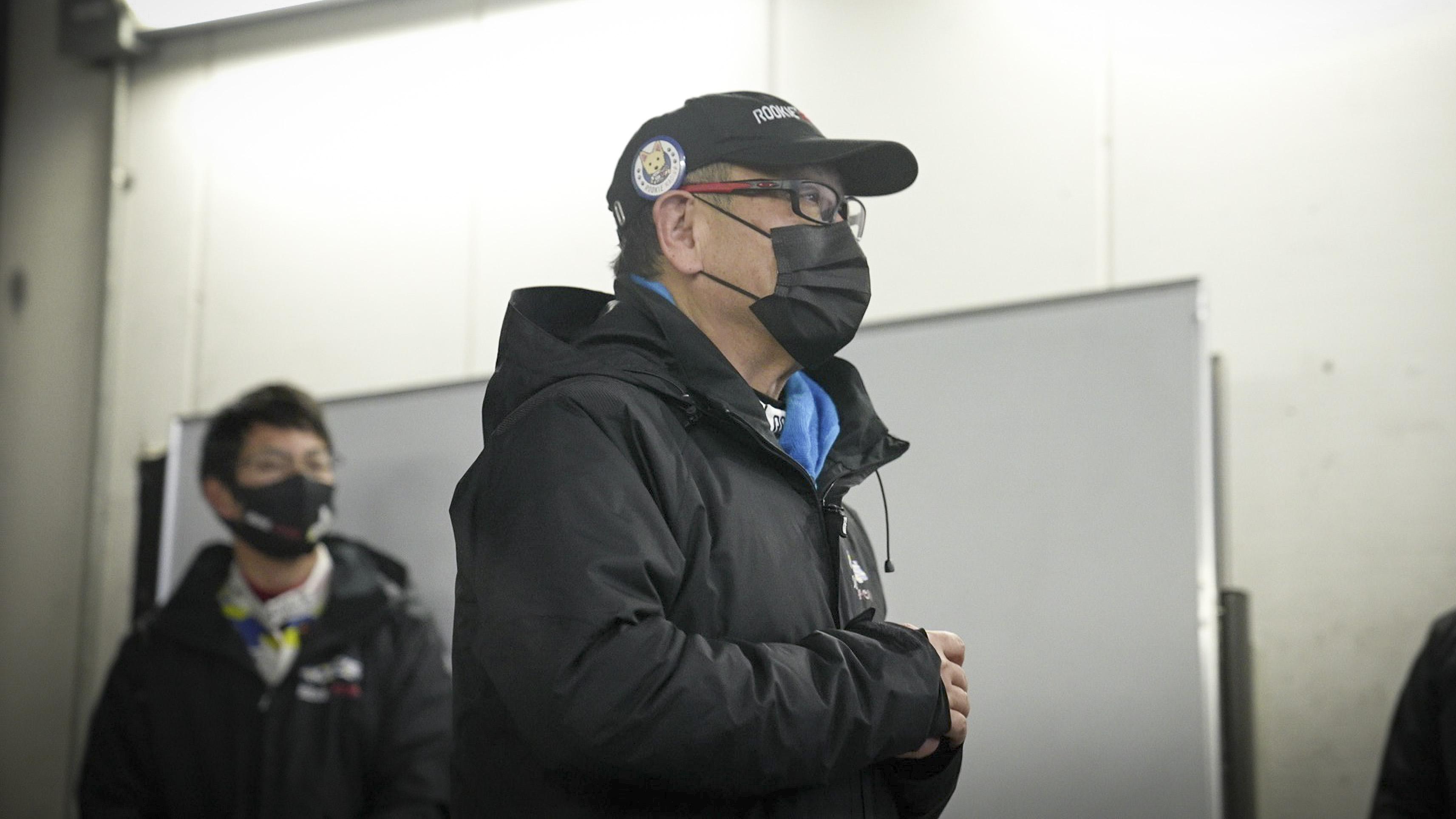
Akio’s message at the end-of-day meeting
Despite the cold weather, we have Iwatani Corporation, Denso, people from TCD, members of our racing team…
In pursuing a hydrogen-based society, I believe we need to move beyond the framework of individual companies.
Together with these people who make, transport and use hydrogen, and the people who watch motorsports, I hope this 24-hour race will serve as an important collaborative step towards creating a hydrogen-based society.
We may have avoided problems so far (up to today’s testing), but the difficulties still lie ahead of us.
When all the different cars are out on the track, there’s no telling what will happen. Regardless, I hope that despite being from different companies we can come together as one team, to speak up and help each other just as we did today. Please help us make that happen. Thank you all for today!
As Akio points out, the 24-hour race is “an important collaborative step towards creating a hydrogen-based society”. Working towards the goal of carbon neutrality, this weekend the “people who make, transport and use hydrogen” will unleash a hydrogen-powered engine on the Fuji Speedway. While being there in person may not be possible, we hope the “people who watch” will turn out in great numbers for the 24-hour race.
